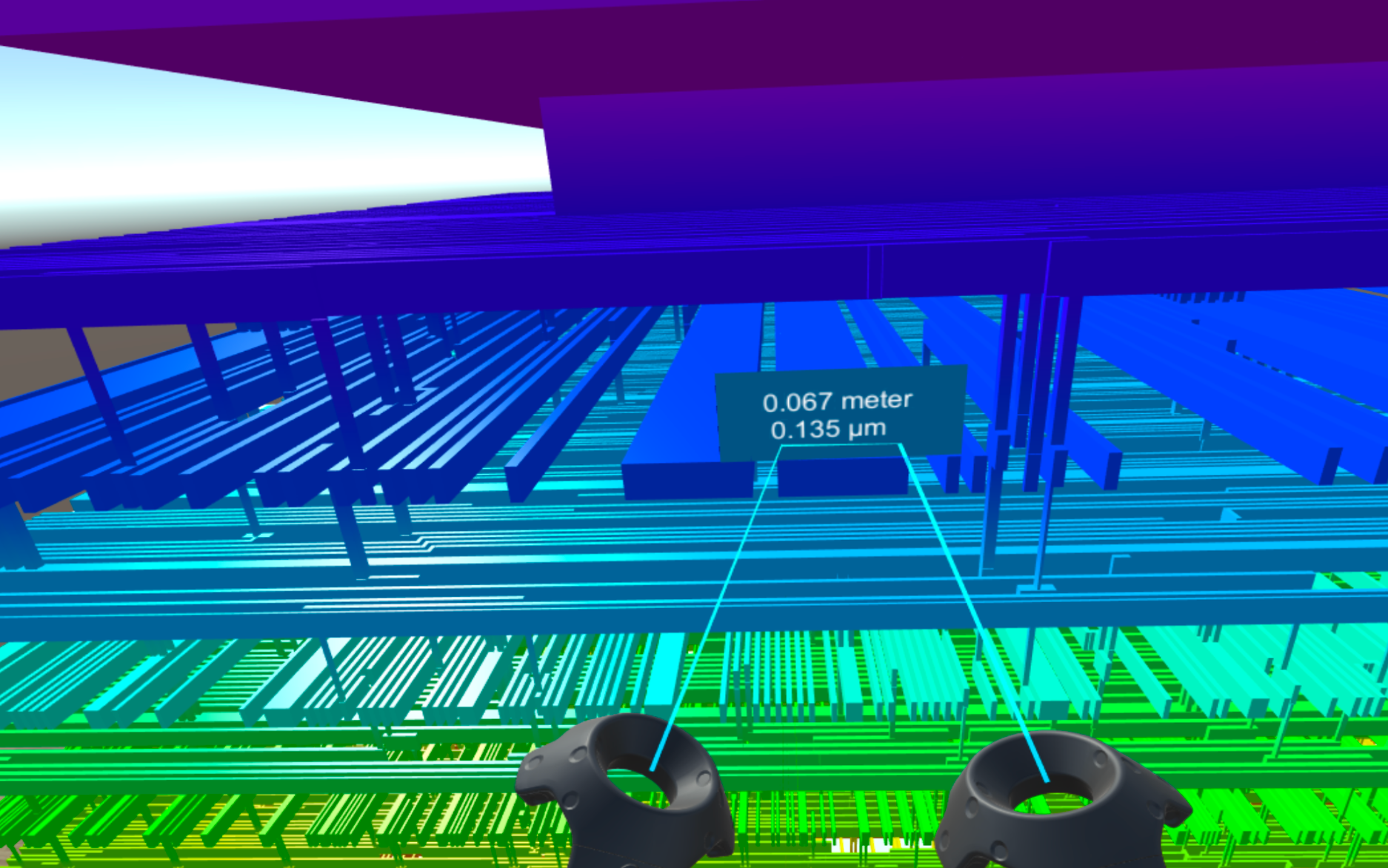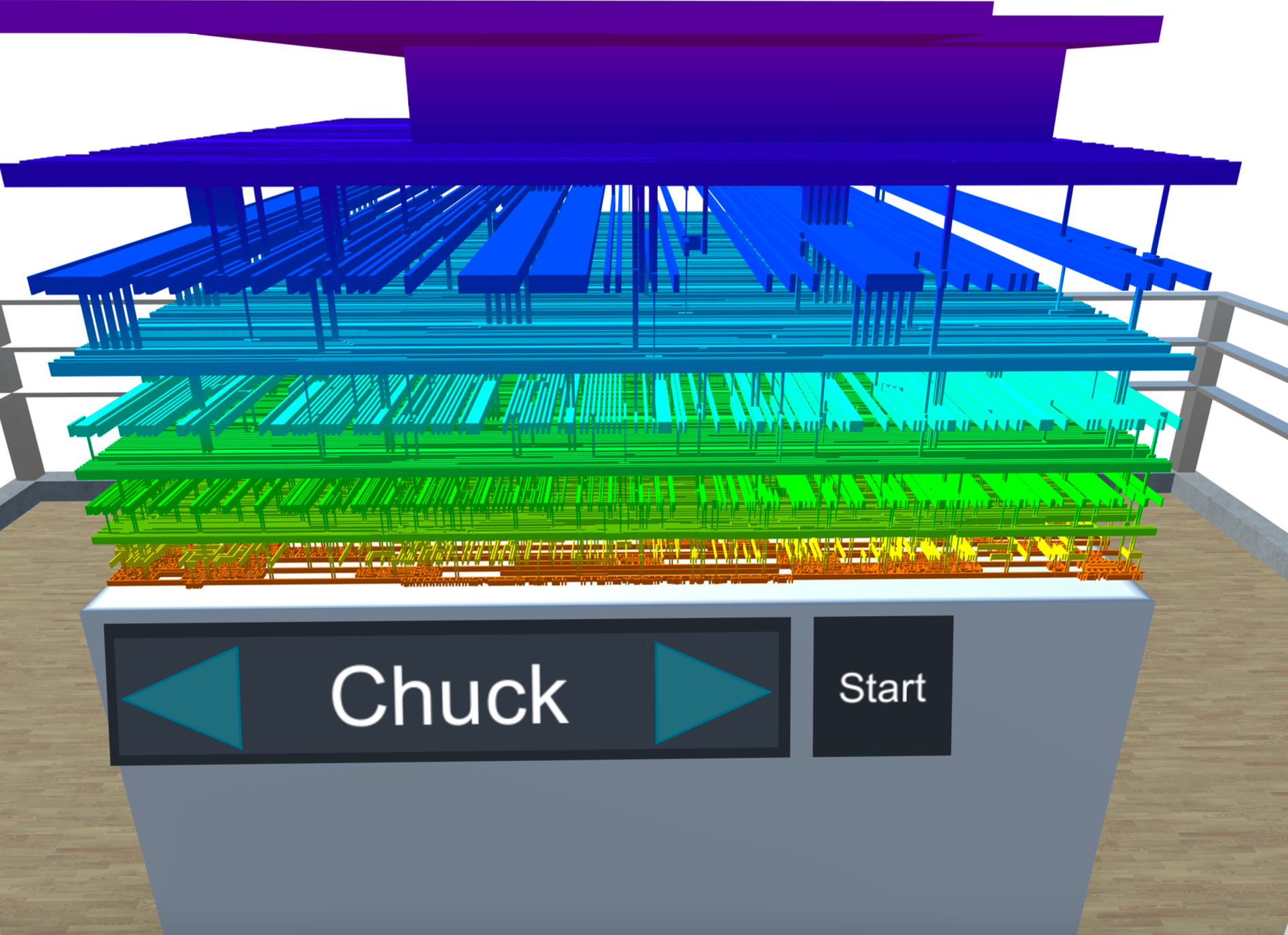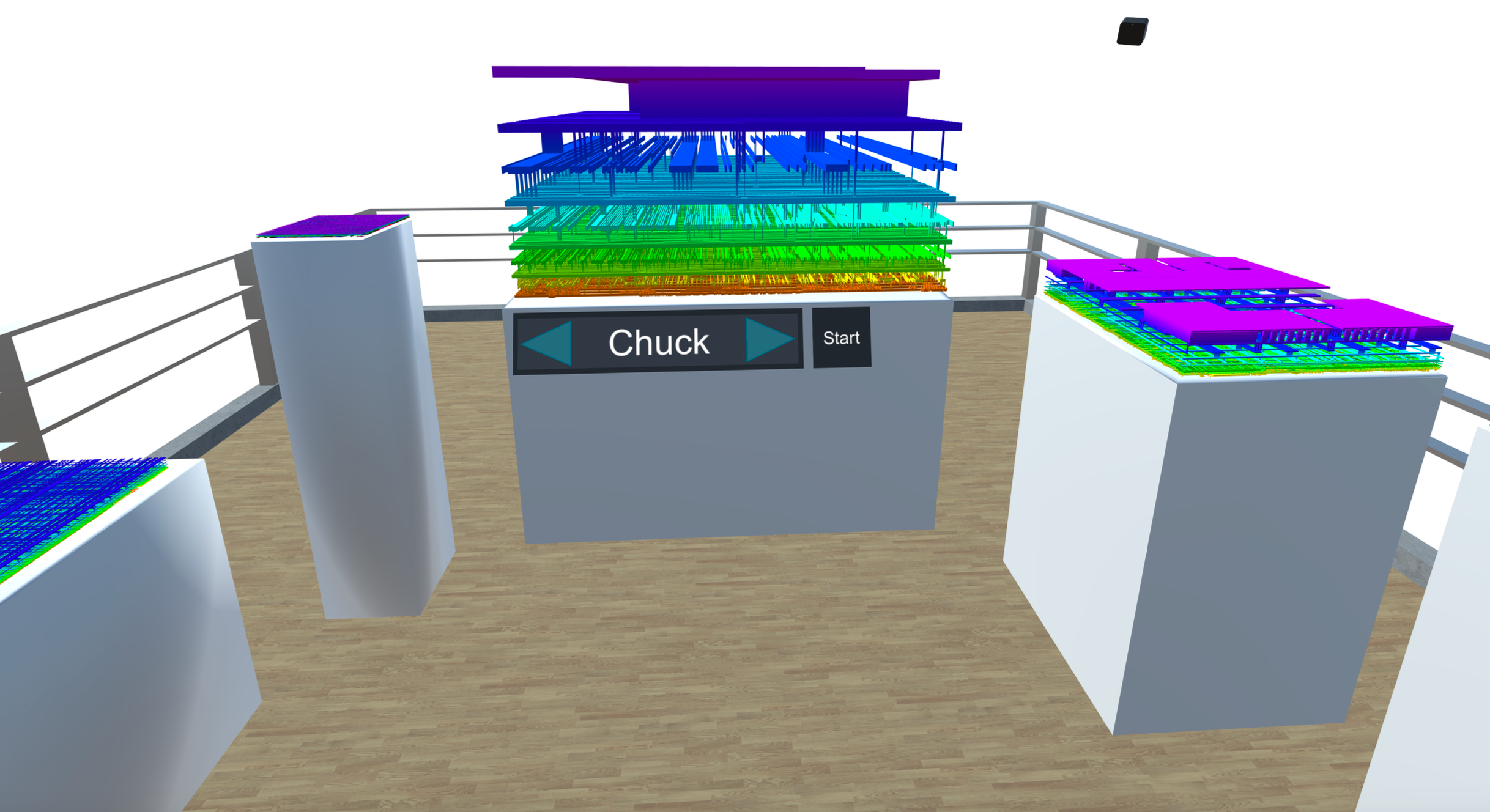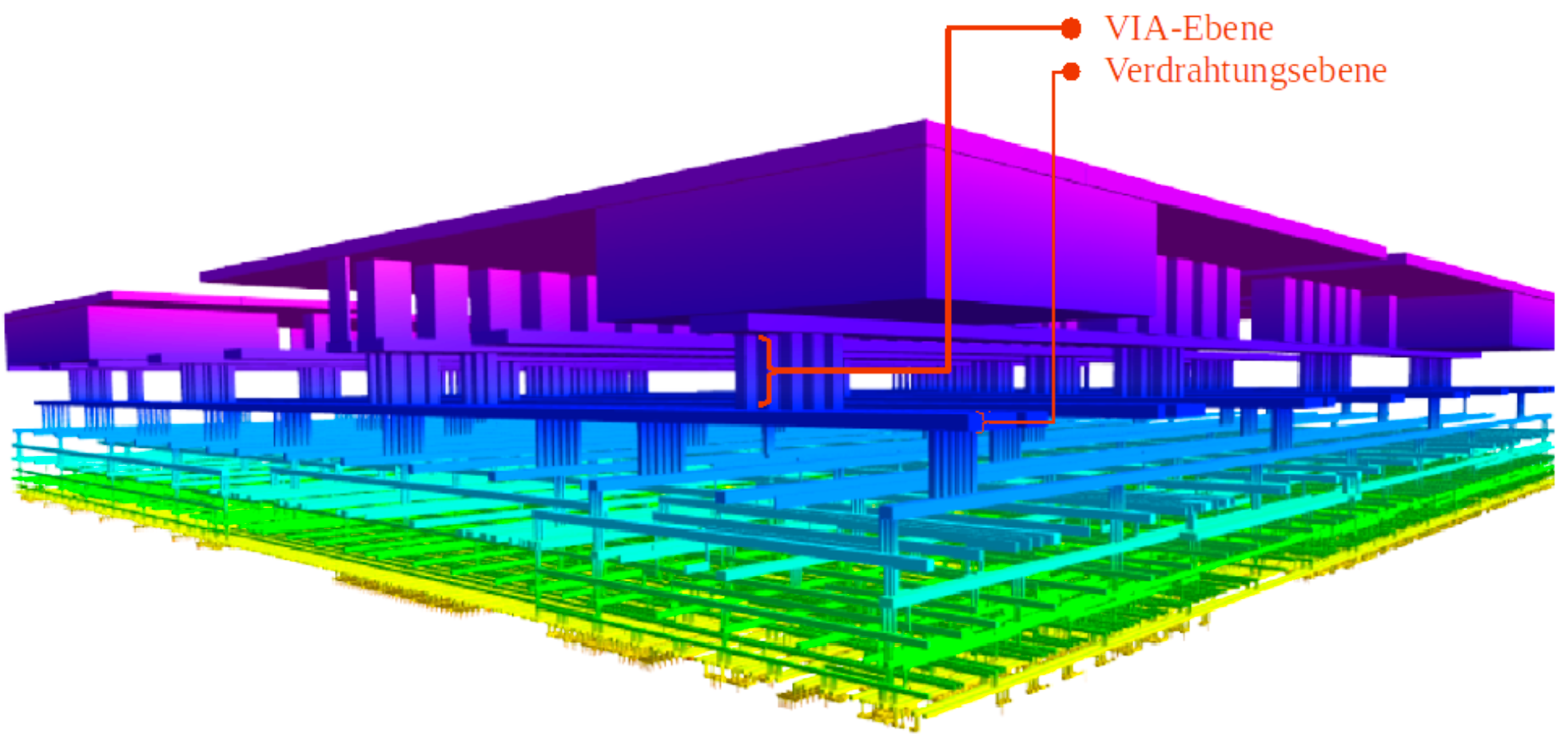Modern Chip Design Explorable within Virtual Reality
In 2016, We initiated a project with my colleague Jonas Weinz at the Discrete Mathematics Institute in Bonn to develop a virtual reality (VR) application that visualized complex chip designs, resulting in a bachelor thesis. This innovative project allowed us to showcase the intricate details of chip architectures in a unique and interactive way, and we were proud to be part of the Arithmeum's chip design exhibition.

In 2016, the virtual reality hype began to develop. I took my first steps in IT in 2009 between gaming system development and computer game development. This included putting together cost-effective high-performance hardware but also developing software that used these graphics accelerators. I developed my first games with the Blender game engine and textures with Gimp. When the first development kits from Oculus came out, I really wanted to be active in this area. So I initiated a project with my dear colleague and friend Jonas Weinz at the Discrete Mathematics Institute in Bonn.

At first glance, this institute seems unusual for VR development. The institute is a leader in the development of chip design algorithms. These chip designs are the basis of modern chip architectures that accommodate billions of transistors and structures in the nanometer range on approximately one square centimeter. Even if this sounds like big numbers and the connected museum Arithmeum visualizes them in wall-filling plots, you hardly get the feeling of complexity. By visualizing the chips in VR and making them accessible within the institute and the museum, we hoped to give interested parties and developers a hands-on impression of them. The sheer size of the data sets was enormous and, as 3D information, would overtax any graphics memory. VR applications in particular are extremely sensitive to latency, as otherwise motion sickness occurs. so it has to run extremely smoothly.

These and other optimizations resulted in a bachelor thesis. Through this innovation, we had the privilege of getting to know many exciting and interested people and institutions. I would like to thank the institute, its staff and especially Jonas Weinz for this great and instructive project. We were very proud to have been involved in the early years and to know that our work was part of the Arithmeum's chip design exhibition. For further details I am happy to provide the bachelor thesis. Thank you for your support and also for the leap of faith at that time to let us realize this project.

If you like to see the full work documentation, please reach out to us. And request at Arithmeum if the VR Experience is available for a visit at the moment. To cite our work please use:
@online{draschnerweinzchipvr2016,
author = {Draschner,Carsten Felix; Weinz, Jonas},
year = {2016},
title = {Die Entwicklungen der Komplexita ̈t im Chipdesign und ihre Visualisierung mit Virtual Reality},
}